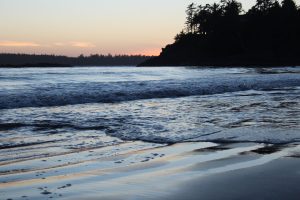
Through this project, we hope to propose a new Marine Protected Area (MPA) in the Pacific Ocean, off the coast of British Columbia. Currently, there are 14 MPAs across Canada. Three MPAs are located in the Arctic ocean, eight in the Atlantic Ocean, and three in the Pacific Ocean. Since we are interested in MPAs in the Pacific Ocean, it is useful to highlight the MPAs already existing in that region. (Presented in Table I.)
| Name | Location | Canadian Bioregion | BC Eco-section |
| Endeavour Hydrothermal Vents MPA | Juan de Fuca strait | Offshore Pacific Bioregion | Transitional Pacific Eco-section |
| SGaan Kinghlas-Bowie Seamount MPA | West of Haida Gwaii | Offshore Pacific Bioregion | Subarctic Pacific Eco-section |
| Hecate Strait/Queen Charlotte Sound Glass Sponge Reefs MPA | North and South of the entrance to Douglas Channel | Northern Shelf Bioregion | Hecate Strait and Queen Charlotte Sound Eco-sections |
Source: Fisheries and Oceans Canada
A marine protected area, as defined by Fisheries and Oceans Canada: “ is part of the ocean that is legally protected and managed to achieve the long-term conservation of nature” (2020). MPAs can not only be assigned to protect marine species and ecosystems, but also for the preservation of many ecological links and ecosystem services. Moreover, MPAs positively contribute to the overall environmental, social, and cultural aspects of Canada.
Marine environments are special because of their complexity. Oceans cover 71% of the Earth’s surface and are intrinsic to our survival and wellbeing. Marine environments are the most biologically diverse, yet least understood and undervalued (United Nation, 2016). Not only do oceans provide us, humans, with food and recreation, they also provide essential ecosystem services such as carbon capture, absorbing 25% of the World’s carbon dioxide, protection against storm surge, and is a vital source of renewable energy (NOAA, n.d.). Establishing MPAs will preserve the ecosystems and build resilience to future disturbances, such as overfishing and climate change. These areas will also provide economic benefits to coastal communities, providing conservation and tourism-related employment.
In this project, we will achieve this by comparing our new and proposed MPA to suitable regions by two different methods, further described in the methodology section. We plan to evaluate our MPA using the following criteria: marine mammal distributions, marine vegetation distributions, biologically significant areas, commercial fishing grounds, bathymetry, and sea surface temperature.
Continue to our data and methodology section.